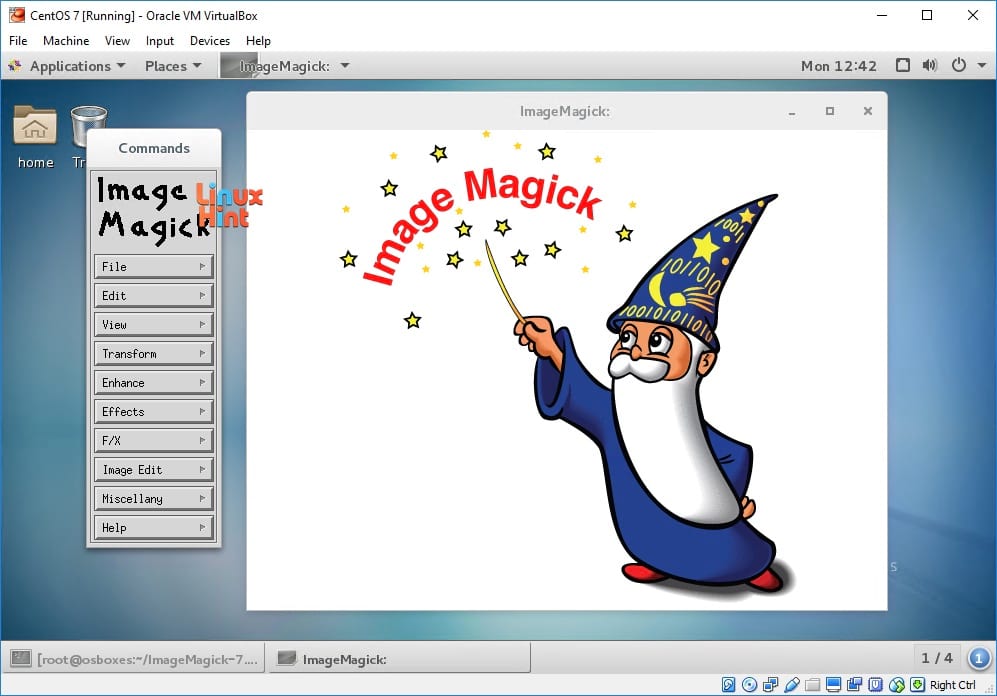
Set each pixel whose value is below zero to zero and any the pixel whose value is above the quantum range to the quantum range (e.g. Use a multi-stage algorithm to detect a wide range of edges in the imageĬontrast limited adaptive histogram equalization Improve brightness / contrast of the image Reduce image noise and reduce detail levels Simulate a scene at nighttime in the moonlight Non-linear, edge-preserving, and noise-reducing smoothing filterįorce all pixels below the threshold into black Transparent, extract, background, or shape the alpha channelĪutomagically adjust gamma level of imageĪutomagically adjust color levels of image On, activate, off, deactivate, set, opaque, copy", Join images into a single multi-image file Click on an option to get more details about how that option works.Īdaptively blur pixels decrease effect near edgesĪdaptively resize image with data dependent triangulation.Īdaptively sharpen pixels increase effect near edges The magick command recognizes these options. You can find additional examples of using magick in Examples of ImageMagick Usage.

resize 400% -sigmoidal-contrast 11.6933 -colorspace sRGB output.png') define filter:filter=Sinc -define filter:window=Jinc -define filter:lobes=3 \ Or here we resize an image with improved quality: magick input.png -colorspace RGB +sigmoidal-contrast 11.6933 \ draw "text 20,55 \'Magick\'" fuzzy-magick.png draw "text 25,60 \'Magick\'" -channel RGBA -blur 0圆 -fill darkred -stroke magenta \ You can combine multiple image-processing operations to produce complex results: magick -size 320x85 canvas:none -font Bookman-DemiItalic -pointsize 72 \ Next, we reduce the image size before it is written to the PNG format: magick rose.jpg -resize 50% rose.png To get started, lets convert an image in the JPEG format to PNG: magick rose.jpg rose.png We list a few examples of the magick command here to illustrate its usefulness and ease of use.
#Imagemagick flatten how to#
See Command Line Processing for advice on how to structure your magick command or see below for example usages of the command. Settings remain in effect until parenthesis boundary.Use the magick program to convert between image formats as well as resize an image, blur, crop, despeckle, dither, draw on, flip, join, re-sample, and much more. Lighten/darken image edges to create a 3-D effectĮxecute a command in an remote animate process Size and location of an image canvas (setting) Replace each pixel with its complementary color

Transform image colors to match this set of colors Identify the format and characteristics of the image Horizontal and vertical backdrop placement Horizontal and vertical density of the imageĪpply a filter to detect edges in the imageĪpply a digital filter to enhance a noisy image

Preferred size and location of the cropped image

Transparent, extract, background, or shape the alpha channelĬlip along the first path from the 8BIM profileĬlip along a named path from the 8BIM profile Click on an option to get more details about how that option works. The animate command recognizes these options. You can find additional examples of using animate in Examples of ImageMagick Usage. To animate a directory of JPEG images, use: magick animate *.jpg To get started, lets animate an image sequence in the GIF format: magick animate movie.gif We list a few examples of the animate command here to illustrate its usefulness and ease of use. See Command Line Processing for advice on how to structure your animate command or see below for example usages of the command. Use the animate program to animate an image sequence on any X server.


 0 kommentar(er)
0 kommentar(er)
